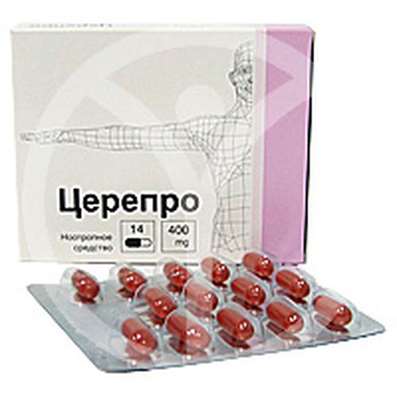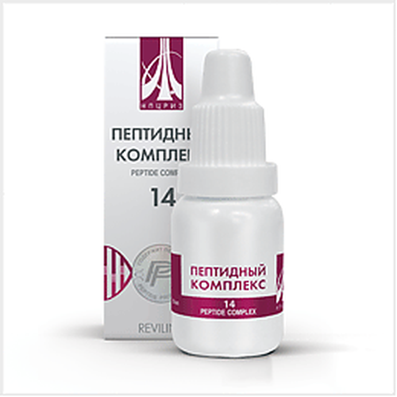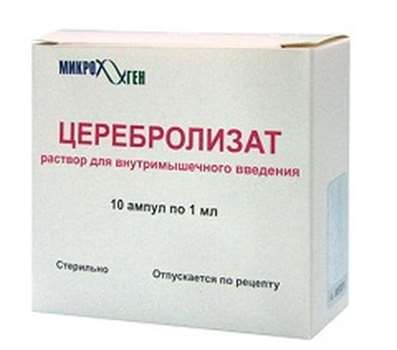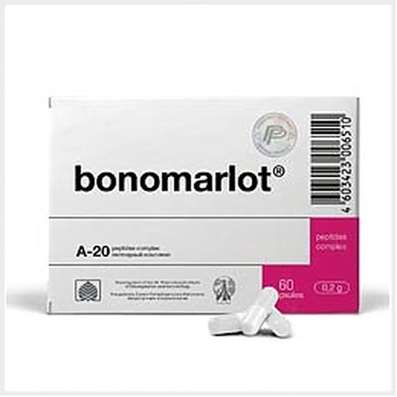Instruction for use: Dostinex
I want this, give me price
Dosage form: tablets
Active substance: Cabergoline*
ATX
G02CB03 Cabergoline
Pharmacological group:
Dopamine receptor agonist [Dophaminomimetics]
The nosological classification (ICD-10)
D35.2 Benign neoplasm of pituitary gland: Pituitary adenoma; Prolactinomas; Macro-prolaktinoma; Microprolactinoma; Prolactinoma; Somatoliberinoma; Aumada del Castillo Syndrome Tumors of the pituitary and suprasellar region
D44.3 Neoplasm of uncertain or unknown pituitary nature: Macropropolactinoma; Microprolactinoma; Prolactinoma; Somatoliberinoma; Prolactinomas
E22.1 Hyperprolactinaemia: Hyperprolactinemia medication; Hyperprolactinaemia with infertility; Hyperprolactinemia in men; Hyperproduction of prolactin; Idiopathic hyperprolactinemia; Chiari-Frommel Syndrome; Forbes-Albright Syndrome; Tumor galactorrhea; Argonsa del Castillo Syndrome; Forbes-Albright Syndrome
E34.9 Endocrine disorder, unspecified: Hormonal disorders; Endocrine Disorders; Violation of the functions of the endocrine system; Syndrome of an empty Turkish saddle
N91.2 Amenorrhea, unspecified: Diagnosis of amenorrhea; Lack of menstrual cycle; Congenital amenorrhea
N91.5 Oligomenorrhea, unspecified: Expressed oligomenorrhoea
N97.0 Female infertility associated with lack of ovulation: Anovulation; Stimulation of ovulation; Stimulation of a single dominant follicle; Stimulation of the growth of multiple follicles; Anovulatory dysfunction of the ovaries; Anovulatory cycle; Induction of ovulation in the treatment of infertility; Infringement of an ovulation; Anovulatory infertility; Infertility due to anovulation or inadequate maturation of the follicle; The hormone-dependent pathology of the reproductive system; Anovulation chronic; Anovulatory cycles; Infertility associated with anovulation; Incomplete maturation of the follicle
O92.6 Galactorrhea: Chiari-Frommel Syndrome; Idiopathic galactorrhea
Z39.1 Care and examination of lactating mother
Composition
Tablets - 1 table.
active substance: Cabergoline 0.5 mg
Auxiliary substances: leucine - 3.6 mg; Lactose - 75.9 mg
Description of dosage form
White flat oblong tablets marked "P" and "U", separated by a notch on one side and "700" with short notches on the top and bottom of the number - on the other hand.
Pharmachologic effect
Mode of action - hypoprolactinemic.
Pharmacodynamics
Cabergoline is a dopaminergic derivative of ergoline and is characterized by a pronounced and prolonged prolactin-lowering effect due to direct stimulation of the D2-dopamine receptors of lactotrophic pituitary cells. In addition, when taking higher doses compared to doses to reduce serum prolactin levels, cabergoline exhibits a central dopaminergic effect due to stimulation of D2 receptors.
Reduction in the concentration of prolactin in the blood plasma is observed within 3 hours after taking the drug and persists for 7-28 days in healthy volunteers and patients with hyperprolactinemia and up to 14-21 days - in women in the postpartum period.
Cabergoline has a strictly selective effect, does not affect the basal secretion of other hormones of the pituitary and cortisol. Prolactin-lowering effect of the drug is dose-dependent, both in terms of severity and duration of action.
The pharmacodynamic effects of cabergoline, not related to the therapeutic effect, include only a reduction in blood pressure. With a single dose of the drug, the maximum hypotensive effect is noted within the first 6 hours and is dose-dependent.
Pharmacokinetics
Kabergoline is rapidly absorbed from the digestive tract, Cmax in plasma is reached after 0.5-4 h, the association with plasma proteins is 41-42%. T1 / 2 cabergoline, estimated by the rate of excretion by the kidneys, is 63-68 hours in healthy volunteers and 79-115 hours in patients with hyperprolactinemia. Due to prolonged T1 / 2, Css is achieved after 4 weeks. 10 days after taking the drug in urine and feces, respectively, about 18 and 72% of the dose, with a percentage of unchanged drug in the urine is 2-3%. The main product of cabergoline metabolism, identified in urine, is 6-allyl-8β-carboxy-ergoline in concentrations up to 4-6% of the dose. The content in the urine of 3 additional metabolites does not exceed 3% of the accepted dose. It has been established that metabolic products have a significantly lower effect on the inhibition of prolactin secretion compared to cabergoline.
The intake of food does not affect the absorption and distribution of cabergoline.
Indications for the drug Dostinex
Prevention of physiological lactation after childbirth;
Suppression of already established postpartum lactation;
Treatment of disorders associated with hyperprolactinemia, including amenorrhea, oligomenorrhoea, anovulation, galactorrhea;
Prolactin secreting adenomas of the pituitary gland (micro- and macro-prolactinomas); Idiopathic hyperprolactinaemia; Syndrome of empty Turkish saddle in combination with hyperprolactinemia.
Contraindications
Hypersensitivity to cabergoline or other components of the drug, as well as to any ergot alkaloids;
Disorders of the heart and respiration due to fibrotic changes or the presence of such conditions in the anamnesis;
With prolonged therapy: anatomical signs of the pathology of the valvular heart apparatus (such as valve flap thickening, narrowing of the valve lumen, mixed pathology constriction and stenosis of the valve), confirmed by echocardiography (EchoCG) performed prior to initiation of therapy;
Lactose intolerance, lactase deficiency, glucose-galactose malabsorption;
Use in children and adolescents under the age of 16 (safety and efficacy of the drug are not established).
Carefully
Like other ergot derivatives, Dostinex® should be administered with caution in the following conditions and / or diseases: hypertension that develops during pregnancy, such as preeclampsia or postpartum arterial hypertension (Dostinex® is prescribed only in cases where the potential benefit of using the drug is significantly Exceeds the possible risk); Severe cardiovascular diseases, Raynaud's syndrome; Peptic ulcer, gastrointestinal bleeding; Severe hepatic insufficiency (use of lower doses is recommended); Severe psychotic or cognitive impairment (including in anamnesis); Simultaneous use with drugs that have an antihypertensive effect (due to the risk of developing orthostatic arterial hypotension).
Application in pregnancy and breastfeeding
Since controlled clinical studies using Dostinex® in pregnant women have not been performed, the appointment of the drug during pregnancy is only possible in cases of extreme necessity, taking into account the benefit / risk ratio for the woman and the fetus.
If the pregnancy occurred against the backdrop of treatment with Dostinex®, the desirability of drug withdrawal should be considered, also considering the benefit / risk ratio.
According to reports, the use of Dostineks® drug at a dose of 0.5-2 mg per week over the disorders associated with hyperprolactinemia, was not accompanied by an increased incidence of miscarriage, premature delivery, multiple pregnancy and congenital malformations.
There is no information on excretion of the drug with breast milk, but in the absence of the effect of using Dostinex ® to prevent or suppress lactation, mothers should stop breastfeeding. For violations related to hyperprolactinemia, Dostinex® is contraindicated in patients planning breastfeeding.
Side effects
In clinical studies using Dostinex® to prevent physiological lactation (1 mg once) and to suppress lactation (0.25 mg every 12 hours for 2 days), side effects were reported in approximately 14% of women. With the use of Dostinex® for 6 months at a dose of 1-2 mg per week divided into 2 doses, the incidence of side effects was 68% for the treatment of hyperprolactinemia-related disorders. Adverse events occurred mainly during the first 2 weeks of therapy and in most cases disappeared with the continuation of therapy or a few days after the abolition of Dostinex®. Adverse events were usually transient, severely or moderately severe and of a dose-dependent nature. At least once in the course of therapy, severe adverse events were noted in 14% of patients; Due to side effects, treatment was discontinued in approximately 3% of patients.
The most common side effects are presented below.
From the CVS: palpitation; Rarely - orthostatic hypotension (with prolonged use of Dostinex ® usually has an antihypertensive effect); Possibly asymptomatic decrease in blood pressure during the first 3-4 days after birth (SAD - no less than 20 mm Hg, DAD - no less than 10 mm Hg).
From the nervous system: dizziness / vertigo, headache, fatigue, drowsiness, depression, fatigue, paresthesia, syncope, nervousness, anxiety, insomnia, impaired concentration.
From the digestive system: nausea, vomiting, epigastric pain, abdominal pain, constipation, gastritis, dyspepsia, dryness of the oral mucosa, diarrhea, flatulence, toothache, feeling pharyngeal mucosa irritation.
Other: mammalgia, dysmenorrhea, epistaxis, rhinitis, rush of blood to the face, transient hemianopsia, spasms of blood vessels of the fingers and lower limbs muscle cramps (like other ergot derivatives, Dostineks® may have vasoconstrictor effect), blurred vision, flu-like symptoms, malaise , Periorbital and peripheral edema, anorexia, acne, skin itching, joint pain.
With prolonged therapy with the use of the drug Dostinex ® deviation from the standard laboratory standard was noted rarely; In women with amenorrhea, a decrease in hemoglobin levels was observed during the first few months after the recovery of menstruation.
The post-marketing study account also the following side effects associated with taking cabergoline: alopecia, increase of CPK activity in the blood, mania, dyspnea, edema, fibrosis of the liver and deviations in liver function, hypersensitivity reactions, rashes, respiratory disorder, respiratory failure , Valvulopathy, pathological predilection for gambling, hypersexuality, increased libido, aggressiveness, psychotic disorders, pericarditis, attacks of sudden falling asleep Ia, decrease or increase in body weight, nasal congestion.
Interaction
Information on the interaction of cabergoline and other ergot alkaloids is absent, so the simultaneous use of these drugs during prolonged therapy with Dostinex® is not recommended.
Since cabergoline has a therapeutic effect by direct stimulation of dopamine receptors, it cannot be administered simultaneously with drugs that act as antagonists of dopamine (phenothiazines, butyrophenones, thioxanthenes, metoclopramide, etc.) Since They can weaken the action of cabergoline, aimed at reducing the concentration of prolactin.
Like other ergot derivatives, cabergoline cannot be used concomitantly with antibiotic-macrolides (eg erythromycin), since it cannot be used as an erythromycin. This can lead to an increase in the systemic bioavailability of cabergoline.
Dosing and Administration
Inside, with food.
Prevention of lactation: 1 mg once (2 tablespoons of 0.5 mg), on the first day after childbirth.
Suppression of steady lactation: 0.25 mg (1/2 table) 2 times a day every 12 hours for two days (total dose - 1 mg). In order to reduce the risk of orthostatic hypotension in breast-feeding mothers, a single dose of the drug Dostinex® should not exceed 0.25 mg.
Treatment of violations associated with hyperprolactinemia: the recommended initial dose is 0.5 mg per week in a single dose (1 table to 0.5 mg) or in two divided doses (1/2 table 0.5 mg, for example, Monday And Thursday). An increase in the weekly dose should be carried out gradually - by 0.5 mg - with a monthly interval to achieve the optimal therapeutic effect. The therapeutic dose is usually 1 mg per week, but can range from 0.25 to 2 mg per week. The maximum dose for patients with hyperprolactinemia should not exceed 4.5 mg per week.
Depending on the tolerance, a weekly dose can be taken once or divided into 2 or more receptions per week. The division of the weekly dose into several doses is recommended when the drug is administered at a dose of more than 1 mg per week.
In patients with hypersensitivity to dopaminergic drugs, the incidence of side effects can be reduced by starting therapy with Dostinex® at a lower dose (eg, 0.25 mg once a week), followed by a gradual increase until a therapeutic dose is achieved. To improve the tolerability of the drug in the occurrence of severe side effects, a temporary dose reduction may be possible, followed by a more gradual increase (for example, an increase of 0.25 mg per week every 2 weeks).
Overdose
Symptoms: development of symptoms of hyperstimulation of dopamine receptors - nausea, vomiting, dyspeptic disorders, orthostatic arterial hypotension, confusion, psychosis, hallucinations.
Treatment: conducting supportive measures aimed at removing the drug (gastric lavage) and, if necessary, maintaining blood pressure. Dopamine antagonists may be prescribed.
Special instructions
Before the appointment of the drug Dostinex ® for the treatment of violations associated with hyperprolactinemia, it is necessary to conduct a full study of the pituitary gland function.
In addition, an assessment should be made of the condition of the CAS, including an echocardiogram (Echocardiogram) to identify abnormalities in valve function that occur asymptomatically.
As with other ergot derivatives, after prolonged administration of cabergoline, patients experienced pleural effusion / pleural fibrosis and valvulopathy. In some cases, patients received previous therapy with dopamine agonist agonists. Therefore, Dostinex® should not be used in patients with existing signs and / or clinical symptoms of cardiac or respiratory function disorder associated with fibrotic changes or with such conditions in the anamnesis. It is necessary to cancel taking the drug in case of signs of appearance or deterioration of the regurgitation of blood, narrowing of the lumen of the valves or thickening of valve flaps (see "Contraindications").
It was found that the rate of erythrocyte sedimentation increases with the development of pleural effusion or fibrosis. In the case of an unexplained increase in the rate of erythrocyte sedimentation, radiographic examination of the chest is recommended. In the diagnosis can also help study the concentration of creatinine in the blood plasma, the evaluation of renal function. After discontinuation of the drug Dostinex ® in patients with pleural effusion / pleural fibrosis or valvulopathy, symptoms improved.
It is not known whether cabergoline can worsen the condition of patients with signs of regurgitation of blood. Cabergoline should not be used to identify fibrotic lesions of the valvular heart apparatus (see "Contraindications").
Fibrotic disorders can develop asymptomatically. In this regard, the condition of patients receiving long-term therapy with cabergoline and paying particular attention to the following symptoms should be regularly monitored:
- pleuro-pulmonary disorders: such as shortness of breath, difficulty breathing, an impassable cough or pain in the chest;
- renal failure or obstruction of the vessels of the ureters or abdominal organs, which may be accompanied by pain in the side or in the lumbar region and edema of the lower extremities, any swelling or tenderness when touching the abdomen, which may indicate the development of retroperitoneal fibrosis;
- Pericardial fibrosis and fibrosis of valves of the heart valves often manifest as heart failure. In this regard, it is necessary to exclude the fibrosis of the valves of the heart valves (and constrictive pericarditis) with the appearance of symptoms of heart failure.
It is necessary to regularly monitor the patient's condition for the development of fibrotic disorders. The first time EchoCG should be performed 3-6 months after the start of therapy. This study should then be performed depending on the clinical evaluation of the patient's condition, paying special attention to the symptoms described above, at least every 6 to 12 months of therapy.
The need for other monitoring methods (eg physical examination, including auscultation of the heart, radiography, computed tomography) is assessed individually for each patient.
With increasing doses, patients should be under the supervision of a physician in order to establish the lowest effective dose providing a therapeutic effect.
After the effective dosing regimen is selected, it is recommended to conduct a regular (once a month) determination of the concentration of prolactin in the blood serum. Normalization of prolactin concentration is usually observed within 2-4 weeks of treatment.
After the abolition of the drug Dostinex ®, a relapse of hyperprolactinemia is usually observed, but in some patients persistent inhibition of prolactin concentration is observed for several months. In most women, ovulatory cycles persist for at least 6 months after the abolition of Dostinex®.
Dostinex® restores ovulation and fertility in women with hyperprolactinemic hypogonadism. Since pregnancy can occur before the recovery of menstruation, it is recommended that pregnancy tests be performed at least once every 4 weeks during the amenorrhea period, and after the recovery of menstruation - every time the menstrual period is delayed by more than 3 days.
Women who wish to avoid pregnancy should use barrier methods of contraception during treatment with Dostinex®, and after discontinuing the drug before the anovulation recurs. Women who have become pregnant should be under the supervision of a doctor to detect symptoms of pituitary gland enlargement, because during pregnancy it is possible to increase the size of pre-existing pituitary tumors.
Dostinex® should be given at lower doses to patients with severe hepatic impairment (Child-Pugh class C), which shows prolonged therapy with the drug.
With a single dose of 1 mg to such patients, an increase in AUC was observed compared to healthy volunteers and patients with less severe hepatic insufficiency.
The use of cabergoline causes drowsiness. In patients with Parkinson's disease, the use of dopamine receptor agonists can cause sudden falling asleep. In such cases, it is recommended to reduce the dose of the drug Dostinex® or discontinue therapy.
Studies on the use of the drug in elderly patients with impairments associated with hyperprolactinemia have not been conducted. The safety and effectiveness of the drug in children younger than 16 years is not established.
Impact on the ability to drive vehicles and mechanisms. Patients taking the drug Dostinex ® should refrain from managing vehicles and mechanisms and other potentially dangerous activities requiring concentration of attention and speed of psychomotor reactions.
Release form
Tablets, 0.5 mg. By 2 or 8 tables. In a bottle of dark glass type I, closed by a screwed aluminum cover with a plastic insert containing a drying agent and porous paper on the bottom. 1 bottle is placed in a cardboard box.
Manufacturer
"Pfizer Italy Srl", Italy.
Terms of leave from pharmacies
On prescription.
Storage conditions of the drug Dostinex
At a temperature not exceeding 25 ° C.
Keep out of the reach of children.
Shelf life of the drug Dostinex
2 years.
Do not use after the expiry date printed on the package.

 Cart
Cart





